Re-imagining Test Cricket: Discussions on Its Format and Longevity

Conversations about the future of Test cricket have highlighted the challenges this traditional format faces in a fast-changing cricketing world. Test cricket, often celebrated as the pinnacle of the sport, is confronting a decline in viewership, scheduling hurdles, and the rising popularity of T20 leagues globally. These concerns have prompted cricket authorities, players, and administrators to consider reforms to revitalize the format while safeguarding its relevance. Introducing the Multi-Format Super Championship A significant idea under discussion involves transforming the existing ICC World Test Championship (WTC) into a multi-format Super Championship. Launched in 2019, the WTC sought to bring structure and significance to bilateral Test series. However, despite its achievements, critics argue that it has not effectively addressed issues like uneven scheduling and limited appeal among non-traditional Test audiences. The proposed multi-format Super Championship would integrate Test, ODI, and T20 matches into a single, cohesive competition. Key aspects of this proposal include: Unified Points System: Teams would compete across formats with a shared points table, ensuring performances in all formats contribute to the overall standings. Equitable Scheduling: The number of matches in each format would be balanced, ensuring fairness and preventing any nation from gaining undue advantage. Development Opportunities for Young Players: By incorporating all three formats, the championship could encourage emerging players to develop skills for Test cricket instead of specializing solely in shorter formats. Enhanced Storytelling: Combining formats into a single competition would create a continuous, engaging narrative that could draw a wider audience and boost viewership across all formats. Addressing Major Challenges T20 League Competition: The explosive growth of T20 leagues such as the Indian Premier League (IPL) and Big Bash League (BBL) has diverted attention and resources from Test cricket. The Super Championship could provide a competitive and financially viable alternative to coexist with these leagues. Capturing Young Audiences: The fast-paced nature of T20 cricket has made it more appealing to younger fans. A multi-format championship could bridge the gap by combining T20’s excitement with the strategic depth of Test cricket. Scheduling Overload: The crowded international calendar often leaves bilateral Test series with limited context. A structured championship could streamline schedules and add meaning to every match. Potential Drawbacks and Critiques While the proposal has its supporters, it has also faced criticism: Risk to Test Cricket’s Integrity: Traditionalists fear that merging formats might dilute Test cricket’s unique identity, which thrives on its independent appeal and intricate battles. Implementation Hurdles: Coordinating a multi-format competition would require extensive collaboration among cricket boards, broadcasters, and players, given the diverse demands of each format. Resource Imbalances: Smaller cricketing nations might struggle to compete in all three formats due to limited player pools and financial constraints. Broader Efforts to Sustain Test Cricket Beyond the Super Championship, efforts to ensure Test cricket’s sustainability include: Day-Night Matches: Introducing pink-ball Tests to make games more accessible to working audiences. Revenue Redistribution: Allocating funds from popular T20 leagues to support Test cricket in less affluent nations. Marketing Innovations: Utilizing modern storytelling and social media to spotlight the drama and intricacies of Test cricket. Conclusion The debate over Test cricket’s future underscores the need for adaptability in the sport. While embracing change is crucial to meet the demands of contemporary audiences, preserving the spirit and tradition of Test cricket remains essential. The multi-format Super Championship represents an ambitious step towards redefining international cricket, but its success will hinge on careful planning and maintaining a balance between innovation and heritage.
India’s Upcoming England Tour: A Challenge of Adaptation and Resurgence

India’s cricket team is gearing up for a pivotal tour of England, with the first Test set to commence on February 15, 2025. After a disappointing 3-1 defeat in Australia, this tour offers the team a chance to address critical shortcomings, regain confidence, and prove their mettle in demanding overseas conditions. Reflections on the Australia Series The loss in the Border-Gavaskar Trophy laid bare several vulnerabilities in India’s squad, particularly in their bowling attack. Jasprit Bumrah’s stellar performance underscored his importance to the team, but his absence in the final Test due to a back spasm highlighted India’s over-reliance on him. The remaining pacers—Mohammed Shami, Mohammed Siraj, and others—struggled to maintain control and effectiveness. Similarly, inconsistency plagued the batting lineup, with frequent top-order collapses adding pressure to the middle order. These issues must be resolved to succeed in England. Priorities for the England Tour Reinforcing the Bowling Attack: English pitches, renowned for their swing and seam, demand a robust pace lineup. Building Depth: The selectors may focus on bowlers capable of supporting Bumrah effectively. Shardul Thakur, Prasidh Krishna, and Jaydev Unadkat could be pivotal in exploiting English conditions. Workload Management: Bumrah’s fitness remains a priority, necessitating a rotation policy to prevent injuries and ensure peak performance. Emerging Talent: Young bowlers like Umran Malik and Mukesh Kumar could gain valuable exposure in challenging conditions. Improving Batting Consistency: While rich in talent, India’s batting lineup must rise to the occasion in hostile conditions. Top Order Resilience: Skipper Rohit Sharma and Shubman Gill must provide stability at the top to ease the burden on the middle order. Middle Order Dependability: Experienced players like Virat Kohli and Cheteshwar Pujara need to adapt quickly and anchor the innings. Lower Order Contributions: All-rounders Ravindra Jadeja and R. Ashwin could play crucial roles in adding vital runs. Tactical Adaptations Optimal Team Composition: Selecting the right mix of players, such as four pacers and one spinner or an additional all-rounder, will be crucial based on pitch conditions. Enhanced Fielding: Given the likelihood of edges in England, improving slip fielding will be essential for capitalizing on opportunities. Navigating English Conditions England’s climate and pitches pose unique challenges. Overcast weather often aids swing bowlers, and the Dukes ball—known for its pronounced movement—will test the technique of Indian batsmen. The team’s adaptability to these conditions will be critical in determining the series outcome. Facing a Strong England Side England, under the leadership of Ben Stokes and the dynamic coaching of Brendon McCullum, has adopted an aggressive style of play known as “Bazball.” Their lineup, featuring stalwarts like Joe Root, Jonny Bairstow, Ollie Robinson, and James Anderson, is formidable and will test India on all fronts. Preparations and Warm-Up Games India is expected to play two warm-up matches ahead of the series. These games will provide players with valuable practice to acclimatize to English pitches and conditions, helping them fine-tune their skills and strategies. High Stakes in the WTC Cycle This series is a crucial part of the ongoing World Test Championship (WTC) cycle. A strong performance in England is not only about redemption but also vital for India’s chances of securing a spot in the WTC final.
Racist Attitudes by Sydney Cricket Ground Supporters: A Disgrace to Cricket

A regrettable incident that occurred during a recent Test match between Australia and India at the Sydney Cricket Ground (SCG) caused significant concern and brought attention to the persistent problems with racism in cricket. The Indian cricket fraternity and its supporters throughout the world accused the Australian fans of racial insensitivity and plain racism after they were seen in photos wearing insulting T-shirts and wigs during the game. Details of the Incident Many people felt that the fans’ clothing disparaged and disrespected Indian cultural and ethnic identity. Wearing wigs that mimicked traditional Indian hairstyles and t-shirts with offensive racial stereotypes were among their acts. The pictures quickly went viral on social media, eliciting criticism from fans worldwide as well as from Indian fans, who demanded tougher measures to stop such behaviour. Reaction from the Indian Community One of the first to express his disdain was Gurn-am Singh, the founder of the Australian-Indian Sports Educational and Cultural Society. Singh stated in a statement that the supporters’ behaviour was “deeply disrespectful” and that it cast a negative light on cricket’s reputation as a unifying sport. He underlined that such conduct sows discord and undermines the goodwill among cricket-loving countries. Singh also called on the SCG management and Australian cricket authorities to take more aggressive action to stop and deal with these kinds of situations. Cricket Australia’s Response There has been increasing pressure on Cricket Australia (CA) to take decisive action. In addition to publicly denouncing the acts, CA has started an internal investigation to find the perpetrators. The board committed to take action to guarantee that all cricket fans feel secure and respected during games and reaffirmed its zero-tolerance stance on racism in a statement. Calls for Accountability and Action Calls for tougher regulations against racist abuse at cricket stadiums have been rekindled by the episode. A number of well-known people, including former Indian cricket players, have advocated for improved crowd control and anti-racism educational programs. Among the recommendations are: Enhanced Screening: Checking for offensive clothing or items before fans are allowed entry into the stadium. Awareness Campaigns: Launching initiatives to educate fans about the impact of their behavior on the spirit of the game. Bans and Penalties: Enforcing lifetime bans or heavy fines on individuals found guilty of racist behavior at matches. A Pattern of Concerns at the SCG Racist accusations have frequently been made against the SCG. Its reputation has been damaged in the past by instances like racial epithets aimed at Indian players, such as Mohammed Siraj during the 2021 series. Even though Cricket Australia has improved its response to these incidents, recurring incidents indicate that stronger tactics are needed. The Broader Implications In addition to damaging cricket’s reputation, racism in the game also goes against the principles of equality, respect, and unity that it seeks to uphold. The need to preserve these ideals for a game with a worldwide fan base is on fans as well as players and authorities. The necessity for cricket to step up its efforts to combat racial intolerance on and off the field is underscored by incidents such as these. Moving Forward The SCG event is a wake-up call for the cricket community worldwide. To guarantee that cricket continues to serve as a forum for embracing diversity rather than fostering division, stakeholders must cooperate. To accomplish this, more robust regulations, prompt action, and extensive education are essential. By taking on these issues head-on, cricket can demonstrate how sports can promote respect for one another and cross-cultural barriers, making such instances a thing of the past.
Virat Kohli’s Test Career: Struggles, Support, and the Path Forward
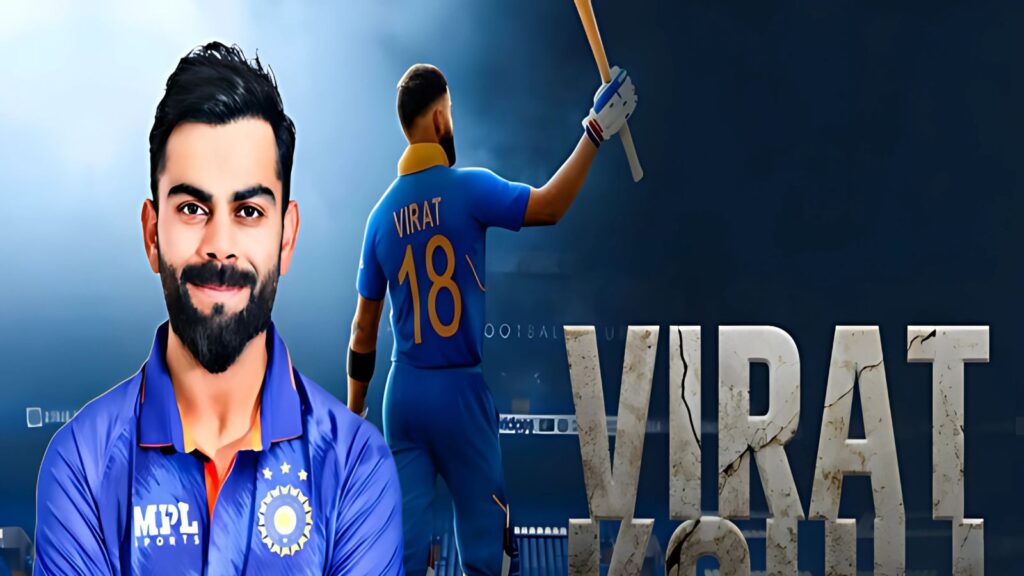
Virat Kohli, one of the most prominent cricketers of his era, is currently undergoing a challenging phase in his Test career. Once regarded as one of the finest batsmen in modern cricket, Kohli’s recent performances have raised doubts about his continued place in the Indian team, especially in the longer format. Amid-st these struggles, former Australian captain Michael Clarke has stepped forward to offer his strong backing for Kohli, urging the Indian management to maintain their confidence in the star player. This public endorsement has sparked renewed discussions about Kohli’s Test future and whether he can return to his best form. Kohli’s Rise to Test Cricket Stardom Virat Kohli’s ascent in Test cricket has been remarkable. After making his debut in 2011, he quickly became an integral part of the Indian batting lineup. Known for his aggressive yet technically sound approach, Kohli gained recognition for his ability to excel in all formats. Over time, his consistency made him one of the most successful Test batsmen in Indian cricket history.In 2016, Kohli reached the pinnacle of his career by becoming the world’s No. 1 Test batsman. His performances, particularly abroad, were crucial to India’s rise as the world’s top Test team. Under Kohli’s leadership, India achieved significant victories, including historic Test series wins in Australia and Sri Lanka. His batting average remained impressively high, often hovering around 50, cementing his reputation as one of the best in the business. A Recent Dip in Form: A Test of Patience Despite his illustrious career, Kohli has experienced a noticeable dip in form in recent years. After a period of dominance, Kohli has struggled to convert starts into big scores, particularly during overseas tours. His inability to notch up centuries has become a talking point, with his last Test century dating back to 2019. This has led to mounting criticism, with some questioning his place in the team and his ability to perform in Test cricket’s demanding format.The debate has also intensified around whether Kohli’s aggressive style of play, which has been a hallmark of his success in limited-overs cricket, is now becoming a liability in Tests. The increased demands of modern cricket, where players often juggle multiple formats, may also be contributing to his struggles. Mental and physical fatigue from playing in all formats, coupled with the pressures of captaining the team (which Kohli did until 2021), could have impacted his Test batting consistency. Michael Clarke’s Support: A Call for Patience and Continuity In the face of this uncertainty, Michael Clarke has come out strongly in support of Kohli. Clarke, who led Australia during many high-stakes battles against India, believes that Kohli remains one of the top batsmen in the world. He urges the Indian team management to continue supporting Kohli, despite his recent struggles, emphasizing that form is temporary, and Kohli’s experience and leadership qualities are invaluable to the team.Clarke’s endorsement is noteworthy for several reasons. His recognition of Kohli’s leadership role and experience highlights how important such players are to the stability of the team. Kohli’s ability to come through in crunch situations and deliver match-winning performances is still unquestionable, and Clarke is confident that the current phase will eventually pass.Clarke’s sentiments resonate with many cricketing experts and fans who believe that patience is key. All great players go through lean patches, and history has shown that the likes of Sachin Tendulkar, Ricky Ponting, and Brian Lara all experienced periods of poor form before bouncing back to their best. The emphasis, therefore, should be on supporting Kohli and providing him the environment he needs to rediscover his peak form. Kohli’s Legacy Beyond the Numbers The conversation about Kohli’s future also touches upon the legacy he is building. Beyond his runs and centuries, Kohli has fundamentally transformed Indian cricket. His work ethic, commitment to fitness, and intense competitive spirit have set new standards for the next generation of players. Many young cricketers now look up to Kohli not only for his batting prowess but also for his leadership and mental toughness.Kohli’s impact on Indian cricket, particularly in the Test arena, is undeniable. Under his captaincy, India reached its best-ever Test rankings and achieved historic series victories against major teams such as Australia and England. Even after stepping down as captain in 2021, his leadership philosophy continues to influence the team. Kohli’s presence in the dressing room remains a stabilizing factor, especially for younger players. The Importance of a Supportive Environment As Kohli navigates through this challenging phase, it is critical for the Indian team management, selectors, and fans to remain supportive. The notion that form is temporary but class is permanent holds true in Kohli’s case. His track record of rising to the occasion during critical moments is well-documented. While the past few series have been challenging, Kohli has proven time and again that he has the ability to deliver when the pressure is highest.
Debate Over the Proposed Two-Tier Test Cricket System

To enhance competitiveness and financial appeal, the International Cricket Council (ICC) is considering introducing a two-tier Test cricket format. While the proposal has stirred excitement among supporters, it has also triggered significant backlash, dividing opinions within the cricketing fraternity. Understanding the Two-Tier Test System The suggested structure would categorize Test-playing nations into two levels: Tier 1: Featuring top-ranked teams like India, Australia, England, South Africa, and New Zealand. These nations would face off more frequently, offering fans high-quality contests and driving stronger viewership. Tier 2: Comprising lower-ranked teams such as Bangladesh, Zimbabwe, and Afghanistan, alongside newer cricketing nations. These teams would largely compete among themselves, with limited chances to play against Tier 1 sides, except through promotion or relegation. Benefits Advocated by Supporters More Competitive Matches:Creating tiers would ensure that top teams compete more evenly, delivering closer contests and drawing higher spectator engagement. Reinvigorating Test Cricket:Proponents argue that the system could revive interest in Test cricket, overshadowed in recent years by the rise of shorter formats like T20. Frequent, high-stakes matches among top teams could breathe new life into the format. Development Opportunities for Emerging Teams:Playing regularly against similarly skilled opponents could help Tier 2 teams improve without the pressure of facing significantly stronger sides too frequently. Criticism of the Two-Tier Proposal Exclusion of Smaller Nations: Detractors warn that the system could alienate lower-ranked teams, depriving them of crucial opportunities to play against established sides. Cricketing legend Sir Clive Lloyd has voiced concerns, stating, “Global cricket cannot flourish by isolating teams in need of exposure.” Widening Inequality: The financial and developmental gap between the tiers could widen as lower-tier teams receive less funding, sponsorship, and media attention, trapping them in a cycle of limited progress. Diminished Global Appeal: Test cricket’s charm lies in its inclusive, allowing for unpredictable encounters between teams of varying strengths. Critics argue that a two-tier system risks diluting this essence, eroding the sport’s universality. Loss of Iconic Rivalries: Historic match-ups, such as India vs. West Indies or England vs. Pakistan, might occur less frequently, weakening the cultural and competitive fabric of Test cricket. Views from Cricketing Greats Sir Clive Lloyd : Criticized the plan for marginalizing smaller nations, warning it could demotivate aspiring cricketers in these regions. Kumar Sangakkara: Sri Lanka’s former captain, expressed concerns about the detrimental impact on cricket’s growth in emerging regions. Rahul Dravid: Emphasized the importance of inclusive, urging the ICC to foster competition across all rankings to maintain the sport’s integrity. Alternative Approaches Balanced Scheduling: Rather than segregating teams, the ICC could create a schedule that ensures lower-ranked teams regularly play against top sides, fostering inclusive while maintaining competitiveness. Increased Development Investment: Allocating more resources to infrastructure, coaching, and grassroots programs in smaller nations could accelerate their progress without excluding them from top-tier cricket. Regular Inter-Tier Matches: Encouraging inter-tier games could provide exposure to lower-ranked teams while offering top-tier sides fresh challenges. Revised World Test Championship Points System: An updated points system rewarding competitive performances, irrespective of team rankings, could motivate every nation to strive for improvement. Conclusion The proposed two-tier Test system represents a critical juncture for Test cricket. While it promises greater competitiveness and commercial viability, its potential to marginalize smaller nations and erode the sport’s inclusive raises valid concerns. As the ICC navigates this contentious issue, finding a balanced solution that supports growth, competition, and global appeal will be crucial to safeguarding the future of Test cricket.
What to Expect from the Upcoming Champions Trophy Squad Announcement
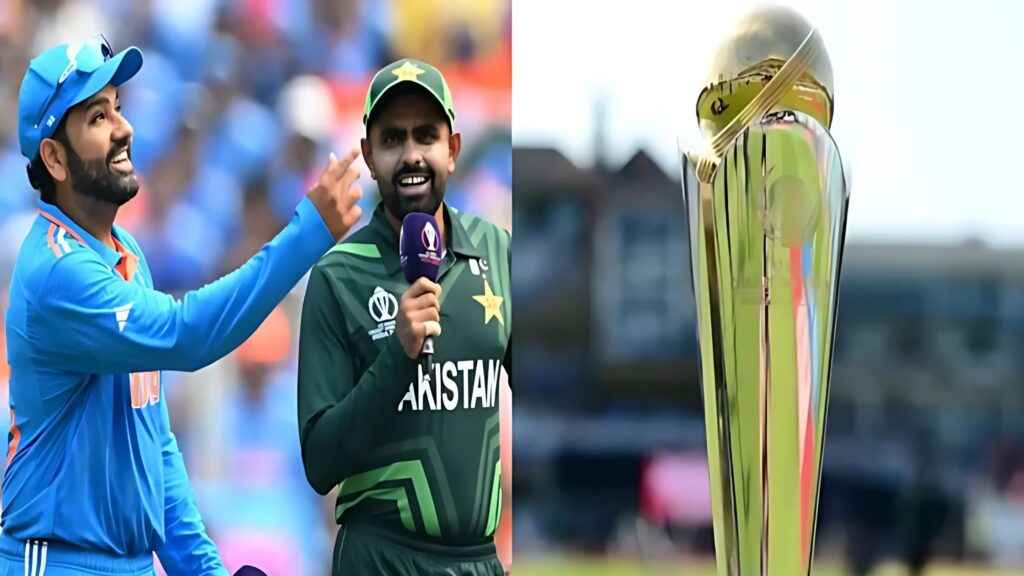
The Board of Control for Cricket in India (BCCI) is gearing up to reveal the much-awaited squad for the 2025 ICC Champions Trophy by January 12. This announcement holds immense significance for Indian cricket, as the tournament presents a crucial chance for the team to reestablish its dominance in the One-Day International (ODI) format following inconsistent performances in Tests and T20s. Key Speculations Surrounding the Squad The Comeback of Key Players: The possible return of wicketkeeper-batsman Rishabh Pant and dynamic batter KL Rahul has sparked considerable interest. Both players bring distinct advantages to the team: Rishabh Pant: Renowned for his explosive batting and ability to excel under pressure, Pant has been recovering from injuries but has recently displayed promising form in domestic cricket. His inclusion would bolster the middle order with much-needed aggression and adaptability. KL Rahul: With experience across various batting positions, Rahul offers stability and versatility. Additionally, his wicket-keeping skills make him a valuable dual-role player, potentially reducing the need for an extra keeper in the squad. Potential Exclusion of Senior Players There is growing speculation that some seasoned players, long considered pillars of Indian cricket, may not make the squad: Rohit Sharma: Despite being the ODI captain, Rohit’s recent performances have been inconsistent. Selectors might explore younger leadership options, putting his position under scrutiny. Virat Kohli: While Kohli remains a central figure, his workload management could prompt the team to rest him, particularly with a focus on the 2027 ODI World Cup. Focus on Youth and Current Form Selectors may prioritize in-form players and rising stars, keeping the future in mind: Batters: Emerging talents like Shubman Gill, who has been exceptional as an opener, and Suryakumar Yadav, known for his adaptability, are likely to be key picks. Bowlers: Mohammed Siraj and Kuldeep Yadav, who have delivered consistently in recent matches, are expected to secure their spots in the squad. Challenges in Squad Selection Crafting a balanced squad will involve several strategic considerations: Seam vs. Spin Dominance: Historically, the Champions Trophy favors seam-friendly conditions, pushing India to lean on a pace-heavy attack. However, spinners like Kuldeep Yadav and Ravindra Jadeja remain crucial for their ability to break partnerships. All-Rounder Depth: Reliable all-rounders such as Hardik Pandya and Axar Patel will likely play pivotal roles, offering depth in both batting and bowling. Wicket-keeping Dilemma: Including both Pant and Rahul could limit spots for specialist batters or bowlers, presenting a tricky balancing act for the selectors. Strategic and Geopolitical Considerations The Champions Trophy is slated to take place in Pakistan, marking India’s return to a major ICC event hosted by their neighboring country in decades. This adds a layer of geopolitical sensitivity to the tournament, as India’s performance will not only be evaluated for its cricketing merit but also for its broader impact on Ind-Pak relations. Anticipation Among Fans Cricket enthusiasts are eagerly awaiting the announcement, hoping for a squad that strikes the perfect balance between youth and experience. With India fresh off their T20 World Cup triumph, there’s a renewed sense of optimism that the Champions Trophy could further solidify the team’s resurgence on the global stage. Conclusion The announcement of the Champions Trophy squad will be a defining moment for Indian cricket, setting the stage for the team’s performance in 2025. As speculation continues over potential inclusions and exclusions, all eyes are on the selectors to unveil a lineup capable of clinching the coveted trophy and ending India’s long-standing ODI title drought.
The Future of Indian Cricket: What’s Next for Rohit Sharma and Virat Kohli
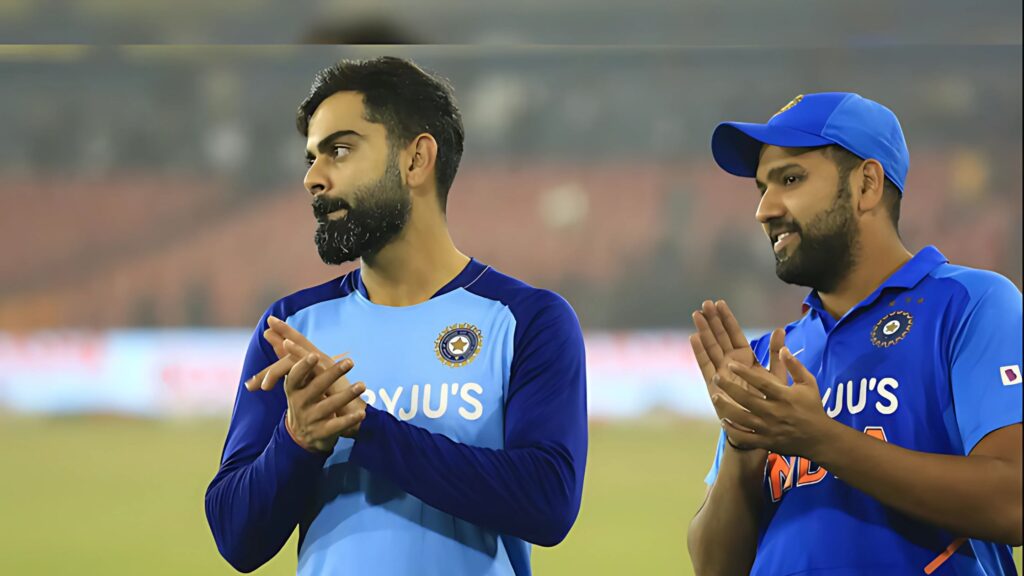
In spite of influencing Indian cricket, two of the game’s most renowned players, Rohit Sharma and Virat Kohli, have made a lasting impression on the world stage. However, there is a lot of conjecture regarding their future once the cricket calendar shifts to 2025. Due to concerns over their longevity, form, and fitness, both legends have sparked a wider conversation about their futures and how their possible retirement would change the landscape of Indian cricket. Rohit Sharma: The “Hitman” at a Crossroads Rohit Sharma has had an absolutely remarkable career. He has revolutionized the art of opening in limited-overs cricket and is well-known for his graceful stroke-play and capacity to strike hundreds. He guided India to historic triumphs as captain, including the 2024 T20 World Cup. However, his future is now uncertain due to his recent difficulties in the Test series against Australia.There are questions over Rohit’s choice to skip the last Test match in Australia. Although his poor series results may point to a decline in form, rumors that he is considering retiring from Test cricket have gathered traction. It has been more difficult to balance job and health at 37. Although Rohit is still an essential part of India’s white-ball system, there are still concerns over his function in the lengthier format. Virat Kohli: A Modern Legend Facing Challenges It is undeniable that Virat Kohli is one of cricket’s best batsmen. A generation has been inspired by his leadership, dedication, and constancy. Kohli’s recent performances, like Rohit’s, have fallen short of his high expectations. His inability to turn starts into significant scores during the Australia series fueled rumors about his future.Even the most fit athletes can be put to the test by cricket’s demanding demands, but Kohli’s fitness levels at 36 are still excellent. Although Kohli has not stated any immediate plans to leave the squad, it is becoming clear that he is changing from being a strong match-winner to a mentor-like character. Both analysts and fans are interested in how he manages to reconcile the demands of a cricket-loving nation with the end of his career. Impact of Their Potential Retirement An era in Indian cricket would come to an end with the departure of Rohit and Kohli. For more over ten years, they have been the core of the team’s batting lineup, setting records and producing memorable performances. Their absence would leave a gap in leadership and experience in addition to runs. Leadership Transition:The leadership responsibilities of Rohit and Kohli have greatly influenced India’s achievements. Even while younger leaders like KL Rahul and Hardik Pandya have shown promise, the shift will need time and assistance. Batting Core Reshuffle:To cover the huge gap in the batting order, the Indian squad will have to find trustworthy substitutes. Ishan Kishan, Shubman Gill, and Ruturaj Gaikwad are a few of the bright young people ready to assume more responsibilities. Team Dynamics and Mentor-ship:Rohit and Kohli might continue to be important instructors to the new generation even after they retire, imparting their extensive expertise. Their advice could be very helpful in developing new players and assisting the group throughout times of change. Preparing for the Future In light of a strong domestic framework and a pool of up-and-coming talent, India’s cricketing infrastructure is prepared to manage such changes. Team management and the BCCI need to: Focus on Player Development: Investing in emerging stars through A tours, camps, and IPL exposure will be key. Plan for Leadership Succession: Ensuring smooth captaincy transitions by grooming potential leaders. Balance Workload Management: Rotating senior players and managing their schedules to maximize performance. Conclusion A golden age in Indian cricket will surely come to an end with the possible retirement of Virat Kohli and Rohit Sharma. Nonetheless, future generations will continue to be inspired by their legacy. Building a squad that recognizes their contributions and forges a route to long-term success must continue to be the key priority as Indian cricket prepares for this unavoidable shift. The impact that Rohit and Kohli have on Indian cricket will last for many years, regardless of whether they decide to retire early or continue playing.
Gautam Gambhir’s Coaching Vision: A New Era for Indian Cricket
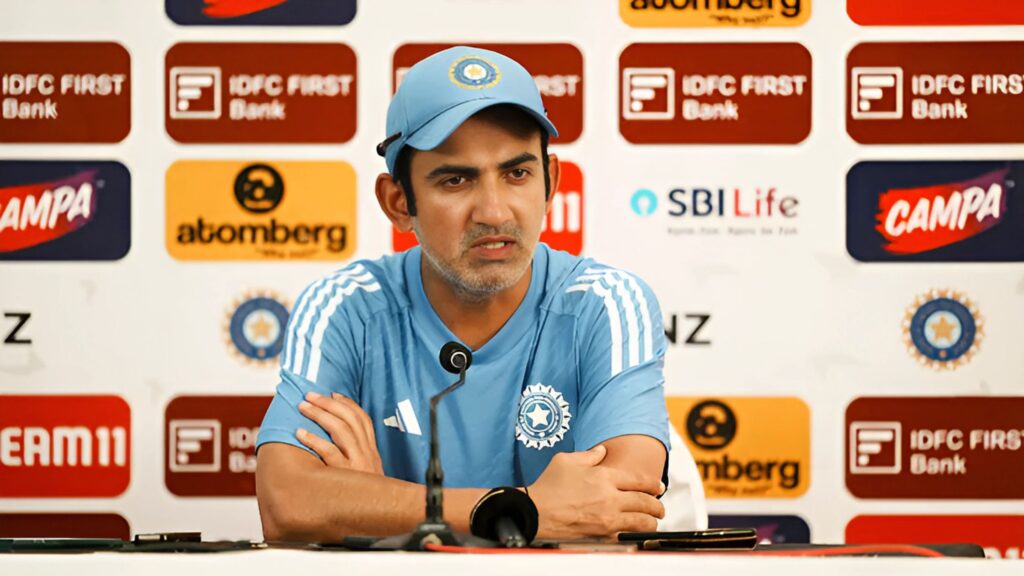
The appointment of Gautam Gambhir as head coach of the Indian cricket team has generated both excitement and intrigue. A cricketer renowned for his resilience and tactical brilliance, Gambhir’s new role signifies the dawn of a fresh chapter in Indian cricket. As fans and analysts speculate about his leadership, a pivotal question arises, can Gambhir’s coaching philosophy rejuvenate Indian cricket and restore its supremacy across formats? Gambhir’s Approach to the Game Throughout his career, Gautam Gambhir exemplified discipline, determination, and a commitment to teamwork. His iconic performances in the 2007 T20 World Cup final and the 2011 ODI World Cup final highlighted his ability to excel under pressure. As a coach, Gambhir’s core principles emphasize mental toughness, fearless cricket, and strong team dynamics. Building Mental Toughness:Gambhir has consistently underscored the importance of mental resilience in cricket. His career—defined by tenacity—provides a template for fostering this trait in players. As a coach, he is likely to prioritize helping players handle high-pressure scenarios, a recurring challenge for Indian cricket. Fostering Fearless Cricket:Known for his aggressive playing style, Gambhir advocates a fearless approach to the game. This philosophy could usher in a more attacking mindset, particularly in Test and T20 formats. Encouraging calculated risks might help India shed its occasional conservatism. Enhancing Team Dynamics:Gambhir’s emphasis on collective success over individual glory is another cornerstone of his philosophy. Cultivating a culture of unity could elevate the team’s overall performance. Navigating Initial Challenges Taking on the mantle of head coach brings its own set of challenges, and Gambhir’s tenure is no different. The recent Test series defeat in Australia exposed several vulnerabilities, such as over-reliance on Jasprit Bumrah and inconsistent batting. Key priorities for Gambhir include: Restoring Team Confidence:The loss in Australia has dampened morale. Gambhir’s immediate task will be to rebuild confidence and turn setbacks into learning opportunities. Reducing Bowling Dependence:India’s heavy reliance on Bumrah has been evident. Gambhir must collaborate with bowling coach Morne Morkel to cultivate a deeper pool of reliable options. Improving Batting Consistency:Addressing the batting lineup’s inconsistencies will be crucial. Gambhir’s emphasis on mental fortitude and fearless cricket could help stabilize this area. Vision for the Future Gambhir’s role extends beyond addressing immediate issues to shaping the long-term future of Indian cricket. His vision likely includes: Nurturing Emerging Talent: Developing players like Shubman Gill, Yashasvi Jaiswal, and Tilak Varma will be central to Gambhir’s strategy. Ensuring a seamless transition as senior players step down is imperative. Prioritizing Fitness and Fielding: Fitness and fielding have always been non-negotiable for Gambhir. Under his guidance, India could see renewed focus on these areas to maintain peak performance. Introducing Tactical Innovations: Gambhir’s strategic mindset and willingness to experiment could lead to innovative approaches, especially in white-ball formats. Player rotation, effective match-ups, and data-driven tactics might become key features of his coaching style. Expectations and the Road Ahead Expectations are high, but Gambhir’s success will hinge on his ability to adapt to modern coaching challenges. His support staff, including Morne Morkel as bowling coach and Abhishek Nayar as assistant coach, will play vital roles in realizing his vision.Upcoming assignments, such as a demanding series in England and the ICC Champions Trophy later in 2025, will be early indicators of Gambhir’s impact. Positive outcomes in these campaigns could set the stage for a successful tenure. Conclusion Gautam Gambhir’s appointment as head coach presents Indian cricket with a unique opportunity to embrace a bold and dynamic approach. His focus on mental resilience, fearless gameplay, and team cohesion holds the potential to transform the team into an even greater force. While the journey ahead is filled with challenges, Gambhir’s leadership might be the key to ushering in a new golden era for Indian cricket. Whether he can translate his vision into tangible results remains to be seen, but his legacy—both as a player and a coach—is poised to leave an enduring impact.
Losing the Border-Gavaskar Trophy: A Cricketing First
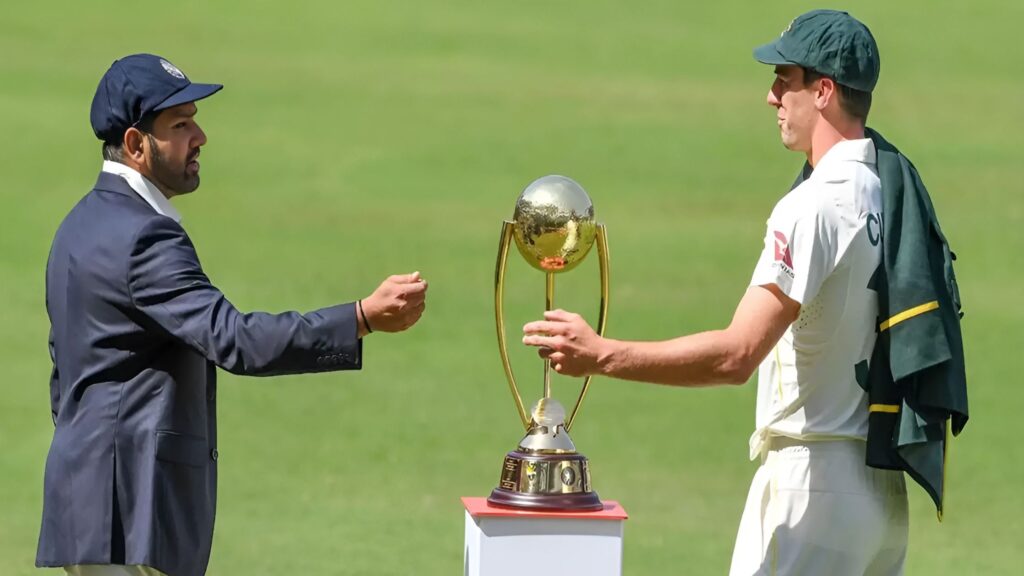
Australia’s victory in the Border-Gavaskar Trophy, one of the most hotly contested series in international cricket, marked a dramatic change in the sport’s environment after ten years. Australia’s 3-1 victory over India at the end of the 2024–25 series solidified their supremacy in the game’s lengthier version and suggested a return to their Test cricketing abilities. The drama, intensity, and skill that have come to characterize this legendary rivalry were perfectly captured in the final Test, which was contested at the Sydney Cricket Ground (SCG). Series Overview and Decisive Victory Australia’s well-rounded team effort, which included exceptional individual efforts, was demonstrated by their 3-1 series victory. Australia’s six-wicket victory in the final Test match at Sydney was especially important. In addition to securing the series, this victory demonstrated the Australian team’s tenacity and depth. India, who were favorites going into the series because of their home supremacy and past victories in Australia, found it difficult to duplicate their performance on difficult wickets. At pivotal points in the series, the team’s tactical and fitness-related setbacks proved costly. Key Moments in the Final Test The final Test was characterized by standout performances, particularly from Australia’s bowling unit and middle-order batting: Scott Boland’s Dominance: Scott Boland, an Australian pacer, was the match’s hero after taking an incredible ten wickets. The Indian hitters had a hard time because of his ability to create movement and extract bounce on a pitch that helped seamers. India was regularly disturbed by Boland’s accurate line and length, which resulted in collapses in both innings. His efforts demonstrated his development as a vital member of Australia’s Test setup and emphasized the country’s bowling might. Travis Head and Beau Webster’s Crucial Partnership: Australia had early setbacks and lost wickets quickly after chasing a small target in the fourth innings. But with a tough pairing, Travis Head and rookie Beau Webster kept the innings steady. The threat offered by India’s bowlers was successfully neutralized by their methodical approach to countering their spin attack and their capacity to rotate the strike. Head’s background and Webster’s poise under duress made sure Australia finished the race without incident. India’s Challenges with Injuries and Form: Jasprit Bumrah, the captain of India, was unable to bowl in the second innings due to back spasms he sustained throughout the game. India’s bowling attack suffered greatly from his absence as they were unable to hold Australia’s hitters in key situations. As important hitters failed to turn beginnings into significant scores throughout the series, the Indian squad likewise struggled with the form of their veteran players. Turning Points in the Series Early Momentum Shift: The tone for the series was established by Australia’s impressive start in the first two Test matches. Australia remained composed and won the series with a commanding performance in Sydney, even though India won the third Test. Australian Resilience: Australia was able to continuously outperform India because of their ability to adjust to changing conditions and their well-balanced team effort. India’s Missed Opportunities: India’s prospects of mounting a comeback were hampered by missed catches, poor reviews, and premature injuries to important players like Mohammed Shami and Ravindra Jadeja. Implications and Reflections Australia’s ten-year search for the Border-Gavaskar Trophy came to an end with this victory. It demonstrated their return to form as a strong Test team under Pat Cummins’ guidance. With contributions from both seasoned players and up-and-coming talent like Webster, the series victory also demonstrated the depth of their roster.The defeat is a wake-up call for India. It revealed their over-reliance on important bowlers like Bumrah and weaknesses in their batting lineup. As they get ready for next tasks, the team will need to review their tactics and deal with these problems. Conclusion With Australia recovering the championship and demonstrating their supremacy, the 2024–25 Border-Gavaskar Trophy will be remembered as a watershed moment in Test cricket. Although it was a victory for the Australians, India learned important lessons from it as well. Like its predecessors, this series preserved the essence of this legendary rivalry while adding another exciting chapter to the Border-Gavaskar Trophy’s illustrious past.
Virat Kohli’s Gesture: A Controversial Chapter in Cricket

The 2024-25 Border-Gavaskar Trophy’s Sydney Test was memorable not only for the cricketing drama but also for a controversy involving Virat Kohli, one of India’s iconic players. Serving as India’s stand-in captain in the absence of Rohit Sharma, Kohli became the focal point of a heated debate after making a provocative gesture alluding to Australia’s infamous “Sandpaper Gate” scandal. The Incident During Australia’s second innings, Steve Smith, a pivotal figure in their batting lineup, was dismissed by the Indian bowlers. As Smith returned to the pavilion, Kohli mimicked a sandpapering motion with his hands, referencing the 2018 ball-tampering scandal involving Smith, David Warner, and Cameron Bancroft. This act, captured on camera, quickly went viral, igniting widespread reactions from fans, commentators, and former players. Diverging Opinions Supporters of Kohli: Many of Kohli’s fans viewed the gesture as a calculated psychological ploy aimed at unsettling the Australian team. They argued that sledging and mental games are entrenched in cricket, particularly in high-pressure contests like the Border-Gavaskar Trophy. To them, Kohli’s actions were a reflection of the competitive edge synonymous with the rivalry. Critics of Kohli Others, including former cricketers and analysts, condemned Kohli’s actions as unnecessary and unsportsmanlike. Australian media and fans labeled the gesture disrespectful, criticizing it as an example of poor sportsmanship. Critics argued that Kohli’s behavior detracted from the cricket being played and tarnished the image of the game. Match Impact While the gesture dominated headlines, it inadvertently overshadowed Kohli’s own contributions in the match. He played a valiant knock of 78 in the first innings and added valuable runs in the second. However, the controversy drew attention away from his performance, with post-match discussions centered on his behavior.The incident also appeared to spur the Australian team into action. After Smith’s dismissal, Australia rallied strongly, ultimately securing a series-clinching victory. Observers suggested that the gesture may have galvanized the Australian players, fueling their determination to close out the match. Wider Repercussions Reviving the Sandpaper Gate Debate: The 2018 ball-tampering scandal remains a sore point for Australian cricket. Kohli’s gesture rekindled discussions about the incident, reopening old wounds. For Smith, who has worked hard to rehabilitate his image, the gesture felt like a personal slight. Kohli’s Leadership Approach Known for his fiery and passionate style of leadership, Kohli’s behavior once again highlighted his emotional approach to the game. While his aggression often inspires his team, this incident raised concerns about maintaining the balance between intensity and sportsmanship. Cricket’s Code of Conduct Although the ICC chose not to penalize Kohli, the incident sparked calls for stricter enforcement of the spirit of cricket.Governing bodies reiterated the importance of dignity and respect on the field. Public and Media Response The controversy dominated discussions for days, with social media divided over Kohli’s actions. Memes and lighthearted jokes proliferated, but serious conversations about sportsmanship and ethics also emerged. The incident highlighted the scrutiny that players, especially high-profile ones like Kohli, face in modern cricket. Conclusion Virat Kohli’s sandpaper gesture during the Sydney Test epitomized the intensity of the India-Australia rivalry but also underscored the fine line between competitive spirit and poor sportsmanship. While his passion and aggression are central to his identity, the incident served as a reminder of the responsibility that comes with his stature.Ultimately, this moment reflects the broader challenges of leadership and behavior in high-stakes sport, emphasizing the importance of maintaining decorum even amid-st the most heated battles.
